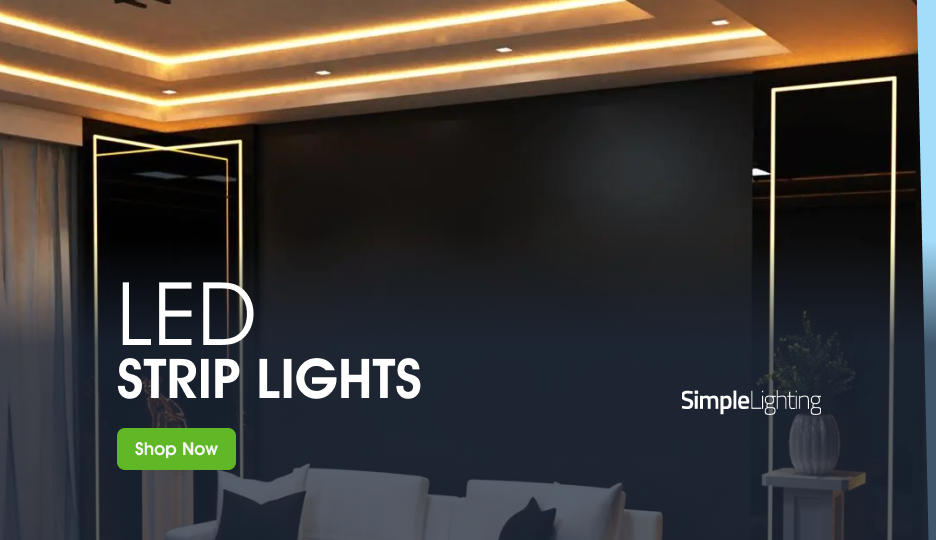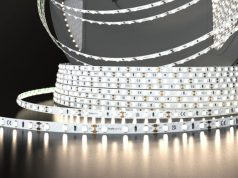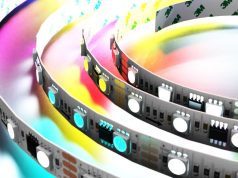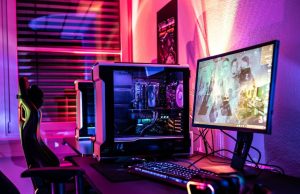Casual gamers play the game. Hardcore gamers? We live it.
Picture this: The room bursts into fiery red colours with every explosion, an eerie green glow creeps as enemies approach, and pulsing amber light ramps up as the boss descends.
Every drop of the bass sends waves of colours through your gaming setup that extend to the walls and ceiling.
This may sound like science fiction to the uninitiated audience, but for gamers, this is the dream: synced gaming and music lighting.
It’s crazy how a simple setup can suddenly look and feel high-end by merely adding a few smart lights.
Gamers know that syncing lights with their gaming setup can take their experience from standard to spectacular.
Put your game face on and let’s explore why syncing your lights matters, how to do it, and the kind of setups that will make you never want to go back to static lighting.
Why Syncing Lights Elevates the Gaming Experience
Lighting has the power to extend the gaming world from the screen to real life. It has “levelled up” from just being about visibility. Now it’s about immersion.
When your LEDs react in real time to your game or soundtrack, you’re not just playing; you’re inside the action.
Nothing would excite a gamer more than being IN the game. And synced lighting takes you a step closer to that dream.
Matching Lighting Effects to On-Screen Action
Say you were playing a horror game. Will it be as scary if the light in your room stays the same cheery brightness while you’re creeping through abandoned corridors? Definitely not.
But add in LEDs that flicker with your torchlight or flash crimson when a monster appears? Suddenly, you’re living the tension.
The idea is to make your room an extension of the screen, and in effect, the extension of the game.
Now, racing games will give off bright streaks of neon, first-person shooters (FPS) will trigger bursts of light with every shot, and even exploration titles will feel more cinematic.
Imagine the room filled with tranquil ocean blue or volcanic orange.
Suddenly, “walking simulators” feel more appealing.
Adding Energy and Atmosphere with Music Sync
Another way to spice up your gameplay? Syncing your lights to the music.
Imagine if your lights pulsed in rhythm with the beat of the game’s music. Boss fights with dramatic orchestral scores become electrifying as ripples of light stream across your room with every bass.
Casual background music? You mean a chill vibe session with slow fades and colour waves.
And it doesn’t stop at in-game soundtracks.
We know that your gaming den is already somewhat of a party and a relaxation retreat, but with music syncing to your favourite playlist, you can take this to the next level and keep your room alive with movement.
Creating a Stream-Ready Setup with Dynamic Lighting
For Twitch and YouTube streamers, lighting is as much a part of your brand as your gameplay.
Ever seen any streamer with static lighting? Don’t their stream look flat and unlively?
With dynamic, synced LEDs, you can make your content truly stand out.
Viewers love it when your background pulses to the music you’re playing or matches the chaos unfolding in-game.
It adds a professional, futuristic edge to your channel and keeps your stream visually engaging, even during quieter moments.

How to Set Up Synced Lighting for Your Gaming Space
So how do you get your LEDs to sync with your games and music? Lucky for us, it’s not rocket science.
Well, there’s still a lot of science involved here, but manufacturers made sure they’d be easy to set up, like plug-and-play lighting for easy DIY.
Choosing the Right Hardware and Software
The first step is picking your gear.
There are many choices available, but knowing what you need will help you narrow down your options to a handful of suitable lights.
1. All-in-One Sync Kits
Plug-and-play lights: the best friend of DIY enthusiast gamers. Everything is designed to work straight out of the box. These kits are perfect if you want quick results without a lot of setup.
One of the most well-known ecosystems for plug-and-play reactive lighting is Philips Hue, where the Hue Sync app captures what’s happening on your screen and translates it into ambient light effects around your room.
2. Screen-Mirroring Systems
Want immersive lighting? Then get one that mirrors the colour of the screen in real time, so the lights on your walls and desk match.
Govee’s Immersion and DreamView are great examples of this. These backlights use a camera to “read” what’s on your screen and flood your wall with matching colours.
3. PC-Integrated Lighting
If you’re a PC gamer, you can use software that links directly to your system. The software can sync lights with in-game actions or with your music player for beat-reactive effects.
A good example of this is Razer Chroma RGB. This software changes the colour of your RGB lights based on your abilities, health bar, or environment.
How cool is that?
4. DIY and Open Source Options
This option is for tech-savvy gamers. There are endless ways to create your own reactive lighting using controllers, strips, and open-source software.
While this takes more effort, you’ll get complete freedom to tailor every effect to your exact style.
Solutions like OpenRGB or Hyperion. This route is definitely deeply satisfying for those who love building their own rigs.
Whatever you choose, make sure your chosen “ecosystem” supports both gaming sync and music sync if you want the best of both worlds.
Conduct some research and read reviews to get a comprehensive understanding of each option’s capabilities.
Tips for Smooth, Lag-Free Lighting Sync
Synced lighting is great, but only if it feels instant. A split-second delay can ruin the magic and the immersion (which is the biggest reason for installing one).
Here’s how to keep things running buttery smooth:
Cable Management Matters – Tangled wires and loose connections cause dropouts and syncing errors. Route your cables neatly using clips or channels.
A clean setup not only looks great, but it also saves you from a lot of headaches later on when you need to replace something and all the wires are tangled.
Network Strength is Key – Many lighting systems rely on Wi-Fi. Make sure your router has a strong signal where your setup is. Better yet, use Ethernet for devices that allow it. Weak Wi-Fi = laggy light response. And if there’s one thing gamers hate, it’s lag.
Optimise Your PC Settings – If you’re using software to control your lights, keep it updated and close unnecessary background programs. That way, you can ensure smooth lighting transitions.
Test Before Streaming – Do a “rehearsal run” of sorts to spot any desync issues before going live in front of viewers.
Even a few minutes of prep can mean the difference between a jaw-dropping experience and a glitchy distraction.
Make It Your Own. Experiment!
Lighting is personal. It’s a reflection of the kind of gamer you are. Are you more of a living light show or a subtle glow?
Here are a few creative ideas to experiment with:
- Boss Fight Mode: Assign specific colour palettes for a more dramatic effect when you’re fighting bosses.
- Victory Celebrations: Program your lights to sparkle or burst into rainbow waves when you win a match.
- Chill Vibes: Set up music sync with smooth colour fades for when you’re winding down with a slower-paced game or playlist.
- Hybrid Setups: You don’t need to be stuck with one set of synced lights. Mix and match your lights. For example, use game-sync for your desk LED strips but music-sync for your background lamps.
Don’t be afraid to experiment. The more you play with settings, the more unique your gaming space will feel. Just make sure to know the limits of your lights.
Final Thoughts
Your gaming room is a blank canvas for special lighting effects.
Syncing your lights to your games and music is the fastest, easiest, and most affordable way to level up your gaming experience.
Because why settle for a static glow when your room could be pulsing with life?
Experiment, play around, and find the combination that makes every game session unforgettable.
Your gaming isn’t just limited to the screen anymore. Now it’s all around you.
Head over to Gaming Lights That Make Your Setup Feel Epic for more ideas to level up your gaming setup.














